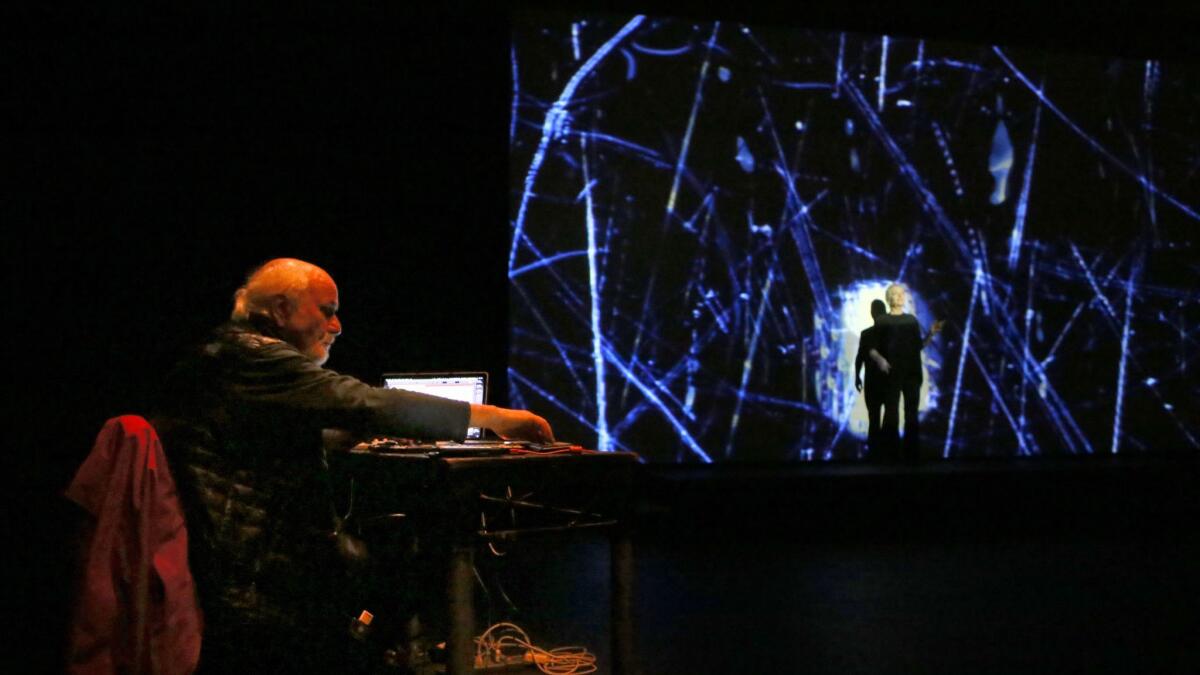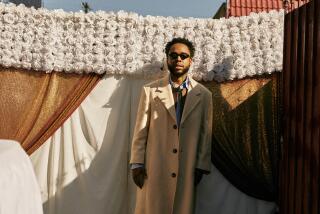Review: 50 years of electronic music nourishment from Morton Subotnick’s ‘Silver Apples of the Moon’

Morton Subotnick’s “Silver Apples of the Moon” was the first electronic music composition commissioned for a recording. When it came out on Nonesuch Records in 1968, that was thought to be a selling point, but it hardly seemed like a big deal. With the exception of the occasional LP of a live performance, most records were supposed to be records, and “Sgt. Pepper” had been a year earlier.
The fact that “Silver Apples” was written for a new-fangled kind of synthesizer was meant to make it the music of the future, but that didn’t seem such a big deal at the time either. Although growing by leaps and bounds, electronic music had been around for quite a while.
Instead, the extraordinary leaps and bounds of Subotnick’s music made the record such a sensation that you couldn’t walk down the hall of any dorm at a hip college, or even a barely hip college, and not hear it. “Silver Apples” was a total turn-on, because it was music that completely reflected its time. But as music set in vinyl, intended for the living room, not the concert hall, “Silver Apples” was also fated to become a relic best suited for a time capsule.
Fifty years on, Subotnick, now 84, has opened that time capsule with “Silver Apples of the Moon Revisited,” which he presented at REDCAT on Tuesday night along with a new work, “Crowds and Power,” during a stop on a world tour. What popped out was no relic at all but a total turn-on for our time.
One way to verify the now-ness of “Silver Apples” was simply to glance at the titles in REDCAT’s carefully curated bookshop, which has always been an excellent source for getting an idea of what matters at the instant. Randomly, I jotted down: “The Improbable Journey,” “Platform Revolution,” “The Quantum Moment,” “The Reenactments,” “We Do Things Differently,” “Brain Bytes,” “The Fourth Dimension of a Poem” and “Smoking Ears and Screaming Teeth.”
The original “Silver Apples” had been laboriously constructed with electronic tools as they were being invented, and Subotnick has said that for this $1,000 commission he had to work 10 to 12 hour days, six days a week, for 13 months to produced a half-hour composition in two parts, one for each side of the record. Side A was a study in pitch, Side B in rhythm, in ways not possible before Don Buchla created an early synthesizer designed to do musical things differently. Unfortunately, though, the Buchla could not compete commercially with the Moog, which was useful for providing electronic glitz to music that otherwise was the same old, same old.
“Silver Apples” may have sounded fresh as an electron when new, but it was unchanging — same new, same new. Over time and with the development of new transistorized equipment and transportable computers, Subotnick, who was a founder of California Institute of the Arts and its electronic music studio, moved on to become a pioneer in developing live electronics that could interact with traditional instruments or voices in a concert setting and that could be different with every performance.
With “Silver Apples … Revisited” he now has the advantage of the latest portable equipment to make it a live work. Seated at his laptop and with various controllers, the composer reuses his original materials and formal structure all the while developing the samples on the spot. He can also play around with more channels than original stereo. At REDCAT the sound traveled around the hall in 5.1 surround, completely taking over the circuitry of a receptive listener’s brain.
It’s mellower music now, beginning quietly and gradually perking up. The result is more seductive than ever. And it is harder to describe than ever. I’m in good company — another title on the REDCAT shelf is “On the Decay of Criticism.”
Yet one more book is “Live Cinema,” and “Silver Apples” has been turned into that as well thanks to Lillevan. The media artist visually took over the darkened theater with bold abstract animation projected on a large screen behind him and Subotnick, who has been working with visual and video artists throughout his long career. Of course, many a psychedelic “Silver Apples” home listening session back in the day included a lava lamp. Even so we possess only so many brain bytes; I closed my eyes.
With “Crowds and Power,” on the other hand, Lillevan’s contribution was integral. The score features Subotnick’s wife, composer and soprano Joan La Barbara, and takes its inspiration from Elias Canetti’s ever-relevant 1960 study of the same name, revealing the rhythms of the mob and the mechanics of power.
Against a striking blue video backdrop, La Barbara becomes like an electrified version of the figure in Edvard Munch’s “The Scream,” gradually growing into and receding from a freakout. She represents both power and power’s horror as her mesmerizing drones, moans and wails merge with Subotnick’s masterfully controlled and gripping electronics.
One of the reasons “Silver Apples” caught on was because it had a dance-like character that gave it immediacy unlike so much sterile electronic music of the time. Although it wasn’t the first expressive electronic music, there remained a worry that this was not a medium for recognizable emotion. But the raw emotion in Subotnick’s latest electronic score is so compelling that crowds and power become what we need to to worry about.
More to Read
The biggest entertainment stories
Get our big stories about Hollywood, film, television, music, arts, culture and more right in your inbox as soon as they publish.
You may occasionally receive promotional content from the Los Angeles Times.











